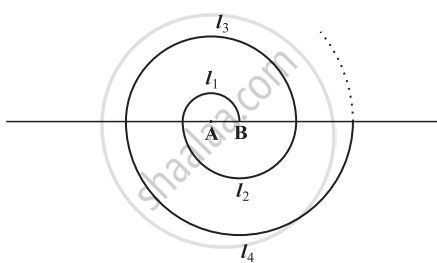Advertisements
Advertisements
Question
The sum of first 9 terms of an A.P. is 162. The ratio of its 6th term to its 13th term is 1 : 2. Find the first and 15th term of the A.P.
Solution
Let a be the first term and d be the common difference.
We know that, sum of first n terms = Sn = \[\frac{n}{2}\][2a + (n − 1)d]
Also, nth term = an = a + (n − 1)d
According to the question,
Sq = 162 and \[\frac{a_6}{a_{13}} = \frac{1}{2}\]
Now,
\[\frac{a_6}{a_{13}} = \frac{1}{2}\]
\[ \Rightarrow \frac{a + (6 - 1)d}{a + (13 - 1)d} = \frac{1}{2}\]
\[ \Rightarrow \frac{a + 5d}{a + 12d} = \frac{1}{2}\]
\[ \Rightarrow 2a + 10d = a + 12d\]
\[ \Rightarrow 2a - a = 12d - 10d\]
\[ \Rightarrow a = 2d . . . . . (1)\]
Also,
S9 =\[\frac{9}{2}\][2a + (9 − 1)d]
⇒ 162 = \[\frac{9}{2}\][2(2d) + 8d] [From (1)]
⇒ 18 = \[\frac{1}{2}\] ⇒ 18 = 6d
⇒ d = 3
⇒ a = 2 × 3 [From (1)]
⇒ a = 6
Thus, the first term of the A.P. is 6.
Now,
a15 = 6 + (15 − 1)3
= 6 + 42
= 48
Thus, 15th term of the A.P. is 48.
APPEARS IN
RELATED QUESTIONS
Find the sum of the following APs.
0.6, 1.7, 2.8, …….., to 100 terms.
A spiral is made up of successive semicircles, with centres alternately at A and B, starting with centre at A of radii 0.5, 1.0 cm, 1.5 cm, 2.0 cm, .... as shown in figure. What is the total length of such a spiral made up of thirteen consecutive semicircles? (Take `pi = 22/7`)

[Hint: Length of successive semicircles is l1, l2, l3, l4, ... with centres at A, B, A, B, ... respectively.]
If the nth term of the A.P. 9, 7, 5, ... is same as the nth term of the A.P. 15, 12, 9, ... find n.
Find the sum of the first 25 terms of an A.P. whose nth term is given by an = 7 − 3n
Find an AP whose 4th term is 9 and the sum of its 6th and 13th terms is 40.
If Sn denote the sum of n terms of an A.P. with first term a and common difference dsuch that \[\frac{Sx}{Skx}\] is independent of x, then
Q.6
Q.1
Obtain the sum of the first 56 terms of an A.P. whose 18th and 39th terms are 52 and 148 respectively.
The sum of the first 2n terms of the AP: 2, 5, 8, …. is equal to sum of the first n terms of the AP: 57, 59, 61, … then n is equal to ______.
